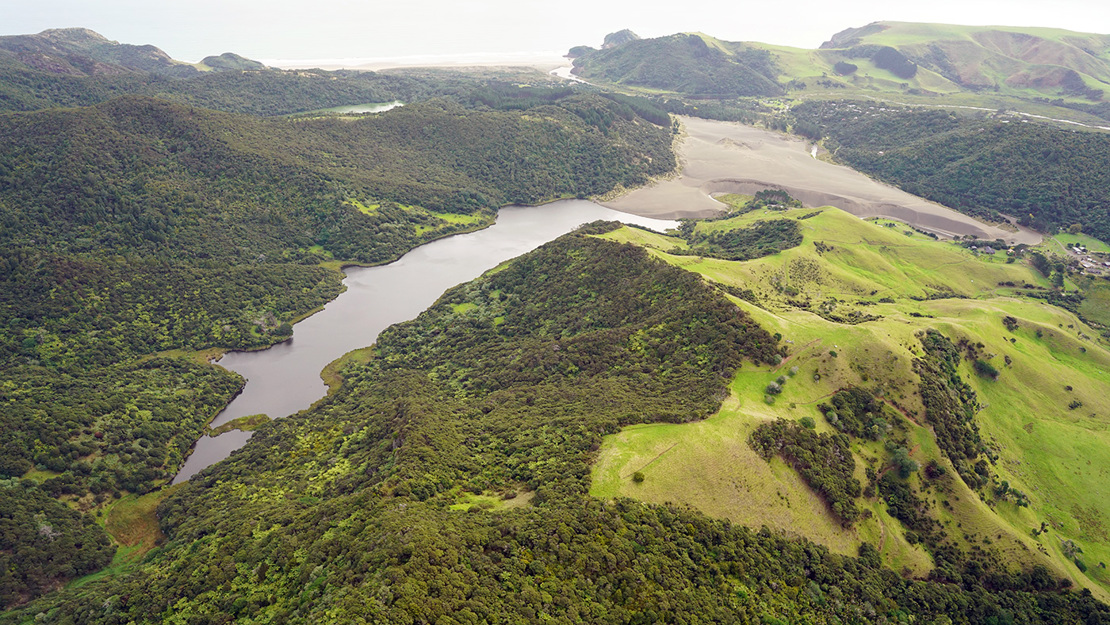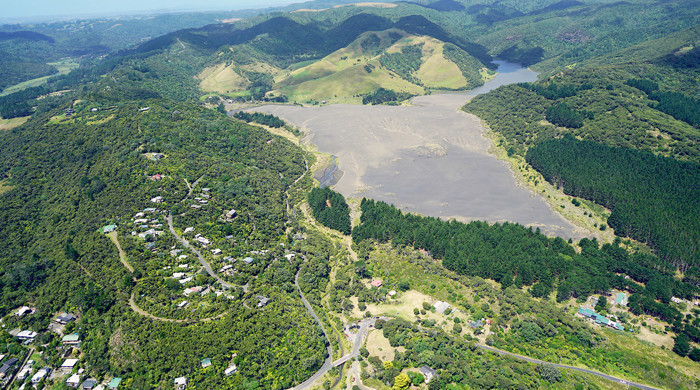Lake Wainamu
Size: 3.39 hectares
Area description
Lake Wainamu is approximately two kilometres inland from Te Henga / Bethells Beach. The lake is within Lake Wainamu Scenic Reserve and administered by Auckland Council as part of the Waitākere Ranges Regional Park. A small portion of the lake edge and buffering vegetation is on private property.
Lake Wainamu is identified as an Outstanding Natural Feature in the Auckland Unitary Plan.

Key ecosystems
Lake Wainamu is the largest natural lake in the Waitākere Ranges. It was formed by the damming of deep stream valleys by sand blown inland from the coast. It is the only landform of this type in the region.
The lake is up to 12 metres deep and is fringed by wetland. Wetland extends into shallow arms of the lake in several places. Machaerina sedgeland (WL11) is the most dominant wetland type closest to the shore. Raupō reedland (WL19) is more common in deeper water. The most common native wetland plant species here are:
- kuawa
- jointed twig rush
- raupō
- kuta.
Large mobile sand dunes separate the lake and beach. Regenerating native vegetation covers steep hillslopes around the rest of the lake. Kānuka dominated scrub (VS2) is common on the northern hillslopes while kauri, podocarp, broadleaved forest (WF11) is regenerating on the southern hillslopes.

Key fauna
There is a good diversity of open water and wetland bird species here. Matuku hūrepo (Australasian bittern) and mātātā (fernbird) have been reported on the lake margins.
Kawau (black shag), kawau tūi (little black shag), and various waterfowl species use the lake regularly. Banded kokopu, an endemic freshwater fish, has also been found in Lake Wainamu.



